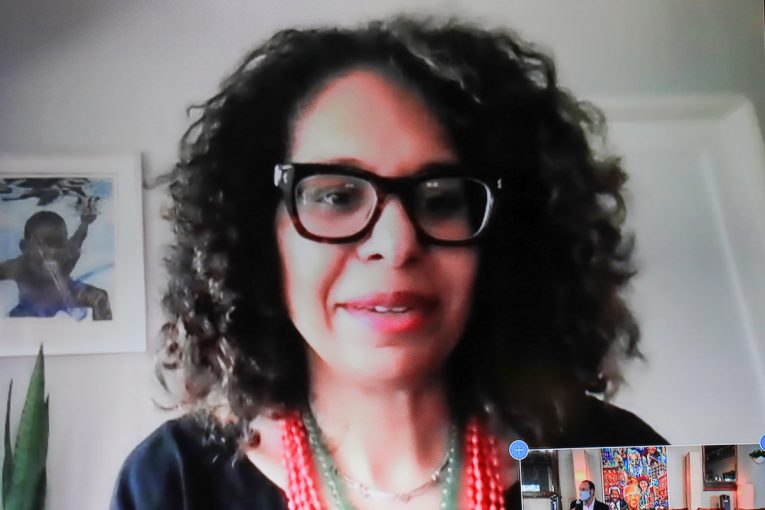

By Stacie Guevara
SACRAMENTO, CA – In a CalMatters article by state Senator Sydney Kamlager and San Francisco District Attorney Chesa Boudin, they claim our government can do a better job of promoting public safety by expanding treatment and housing for people with untreated behavioral health needs, prioritizing those resources.
California has not adequately treated and housed people with behavioral health needs, which, in turn, has led to overdose deaths, large homeless populations and concerns for public safety, they said.
According to a 2020 Mission Local article by Annika Hom, $492 million in Prop. C money was unlocked for San Francisco’s homeless population, while a 2016 Los Angeles Time article by Gale Holland and Doug Smith stated that Los Angeles voted to spend $1.2 billion to house the homeless.
Voters in both cities have advocated for increasing funds to house the homeless and both counties have shut down jails, redirecting resources to treatment.
In a Los Angeles Daily News article published in June, LA County Supervisors voted 4-1 to close the Men’s County Jail.
According to a 2020 Mission Local article by Julian Mark, SF County Jail No. 4 was closed in September 2020.
Assembly Bill 369 and Senate Bill 679 would expand Medi-Cal access to homeless people and it would provide state support to create affordable housing in Los Angeles. Both bills are currently making their way through the legislative process.
The CalMatters article claims that our government has focused on punishing people with untreated behavioral health needs, putting them in jails and prisons rather than investing in treatment and housing. The article claims, “We spend billions of dollars on jails and prisons but lack sufficient treatment beds.”
According to an October 2020 update report of the San Francisco Department of Health’s Mental Health Reform, 18,000 people are homeless, and almost a quarter of them have a mental illness or substance use disorder.
These problems often bring them to local hospitals, according to the 2018 San Francisco Performance Audit of the Department of Public Health Behavioral Health Services.
During the 2017 fiscal year, of the people discharged from San Francisco General Hospital’s psychiatric emergency services, 40 percent of them were not connected to services after they were released, notes a 2018 San Francisco Examiner article by Joshua Sabatini.
This put vulnerable people at risk for the inability to generate coping mechanisms in response to that stress, requiring even more mental health treatment.
There was a great lack of case managers, insufficient outpatient options and an inadequate number of hours for people to receive emergency services, according to a 2017 San Francisco city audit.
And a 2019 San Francisco Chronicle article by Trisha Thadani noted San Francisco had only 394 mental health and substance use treatment beds.
A July 2021 San Francisco Chronicle article by Emma Talley stated that San Francisco had announced plans to install 400 additional new treatment beds in the next few years.
According to a 2020 article published by the Los Angeles Homeless Services Authority, there were over 66,000 homeless people in Los Angeles County as of January 2020, and almost a quarter of them are mentally ill.
A 2020 report by NPR’s Eric Westervelt and Liz Baker states that the Los Angeles County Jail is the largest treatment facility in the nation, housing 5,000 prisoners with mental illness.
The NPR article states that mentally ill people that are incarcerated for nonviolent offenses have been held naked and handcuffed to tables to stop them from moving, adding they receive no treatment other than psychotropic medication, making it as inhumane as it is ineffective.
In a 2019 study commissioned by the Los Angeles County Board of Supervisors, researchers estimated that up to 68 percent of the jail population with mental health issues could be diverted out of jail. This could be done ideally if there were housing or treatment beds available, making the installation of 400 beds sound less than stellar.
According to the NPR report, it costs five times as much to incarcerate individuals with behavioral health needs than it does to offer in-patient treatment, which makes the decision to incarcerate those individuals questionable.
The fact that there are people with behavioral health needs living on the streets makes people feel like “there has been a fundamental breakdown of the social order, which makes people feel unsafe,” according to the CalMatters article.
For those forced to live on the streets with untreated health needs, there is no safety for them and, in the worst case, someone with an untreated mental illness can harm those around them.
Senator Kamlager and District Attorney Boudin call on funding our non-law enforcement crisis response teams, ensuring that social workers can respond to situations stemming from mental illness or substance use disorders. They do not want police to respond to these situations, but social workers, agencies and treatment facilities.


How long before our social workers behave like cops, and our treatment facilities are no better than our prisons?
Interesting question… doubt anyone can validly predict…